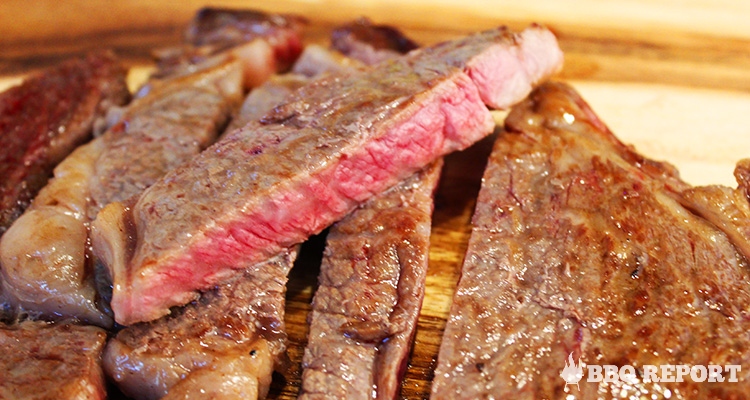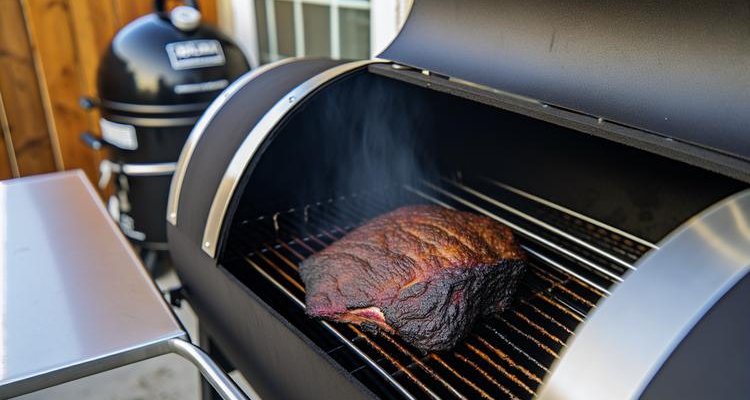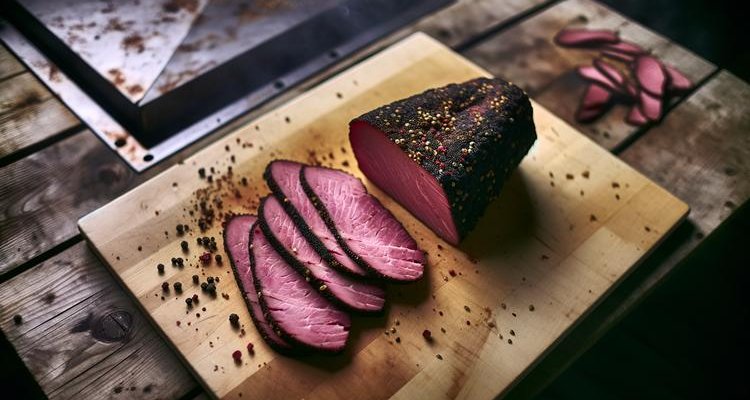
If you’ve ever savored a thick-cut pastrami sandwich at a legendary New York deli and wondered if you could recreate that magic at home, the answer is a resounding yes. Making authentic, deli-quality pastrami from scratch is one of the most rewarding projects you can tackle on your smoker. While the process spans several days—combining the ancient art of curing with modern low-and-slow smoking techniques—the result is tender, peppery, melt-in-your-mouth pastrami that rivals anything you’d find at Katz’s or Carnegie Deli.
This comprehensive guide walks you through every step of transforming a beef brisket into spectacular smoked pastrami. From selecting the right brisket and creating the perfect curing brine to nailing the smoking process and achieving that signature pink smoke ring, you’ll learn the techniques that separate good pastrami from extraordinary pastrami. Whether you’re an experienced pitmaster or relatively new to choosing the right smoker, this recipe provides all the knowledge you need to succeed.
What Makes Authentic Pastrami Different
The foundation of exceptional pastrami lies in the curing process, which transforms ordinary beef brisket into something extraordinary. Unlike a simple smoked brisket, pastrami requires a multi-day brine that infuses the meat with salt, sugar, and aromatic spices while developing that distinctive pink color and preserved texture that defines authentic deli pastrami.
The secret ingredient that makes true pastrami possible is Prague Powder #1 (also called pink curing salt or InstaCure #1). This food-grade curing agent contains 6.25% sodium nitrite, which serves three critical functions: it prevents harmful bacterial growth during the long curing period, creates that characteristic pink “smoke ring” color throughout the meat, and develops the unique cured flavor that distinguishes pastrami from regular smoked brisket. Without Prague Powder #1, you’d simply have a spice-rubbed smoked brisket—delicious, but not authentic pastrami.
The Curing Process: Building Flavor Over Time
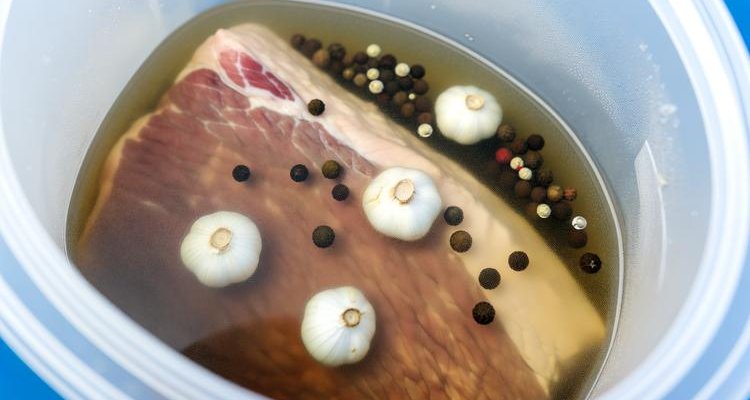
The curing brine combines Prague Powder #1 with kosher salt, brown sugar, pickling spices (including coriander seeds, mustard seeds, black peppercorns, and bay leaves), and fresh garlic. This aromatic mixture needs 7-10 days of refrigerated contact time to fully penetrate a whole brisket flat. During this period, the cure works its way into every fiber of the meat, creating uniform color, flavor, and texture from edge to edge. Be patient—rushing the curing process produces uneven results with raw-tasting centers and over-cured edges.
After the full curing period, you’ll rinse the brisket thoroughly under cold water to remove excess surface salt, then let it rest uncovered in the refrigerator for 12-24 hours. This drying step, called pellicle formation, creates a slightly tacky surface that helps the peppercorn rub adhere and allows smoke to penetrate more effectively during cooking.
Smoking Your Pastrami to Perfection
Once your brisket has completed curing and drying, it’s time for the transformation that turns cured beef into genuine smoked pastrami. The traditional pastrami spice rub is beautifully simple: coarsely cracked black peppercorns and coriander seeds in roughly equal proportions, pressed firmly into all surfaces of the meat. Some pitmasters add a thin layer of yellow mustard as a binder, but it’s optional—the slightly tacky pellicle surface provides enough adhesion on its own.
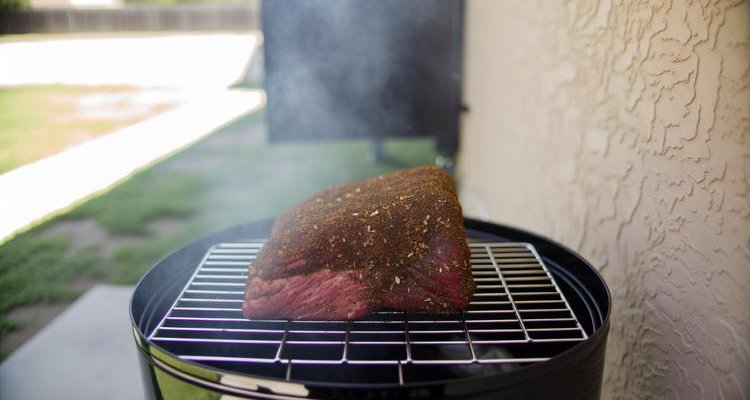
Set up your smoker for low-and-slow cooking at 225-250°F using a mild wood like oak, hickory, or a fruit wood. Avoid heavy woods like mesquite, which can overpower the delicate balance of curing spices. For more details on choosing the best wood for smoking, check out our complete guide. Place the seasoned brisket directly on the grate fat-side up and insert a reliable meat thermometer into the thickest part of the flat.
Smoke the pastrami uncovered until it reaches an internal temperature of 165-170°F, which typically takes 4-5 hours depending on the size of your brisket flat. At this point, the meat has absorbed maximum smoke flavor and developed a dark, peppery bark. Now wrap the pastrami tightly in butcher paper or heavy-duty aluminum foil to protect the bark and accelerate the cooking process.
Return the wrapped pastrami to the smoker and continue cooking until the internal temperature reaches 198-205°F. This final push usually takes another 3-4 hours. At these temperatures, the tough connective tissues have fully broken down, transforming the brisket into tender, sliceable pastrami that maintains its structure without falling apart.
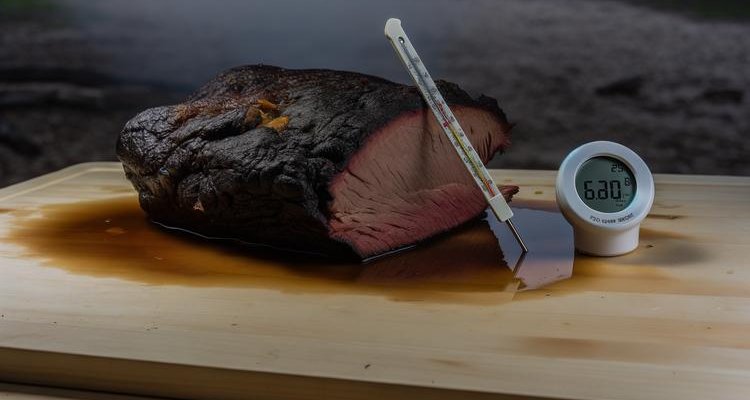
Some traditional delis take an additional step: after smoking, they steam the pastrami for 30-45 minutes before slicing. This extra steaming creates an even more tender texture and helps the meat retain moisture during slicing. While optional for home cooks, steaming does produce results closer to classic New York deli pastrami. Whether you steam or not, allow resting for optimal juiciness—at least 30-60 minutes wrapped in a cooler or warm oven before slicing.
Slicing and Serving Your Homemade Pastrami
The final step that separates amateur pastrami from deli-quality perfection is proper slicing technique. Always slice pastrami against the grain—perpendicular to the direction of the muscle fibers—to ensure maximum tenderness. The ideal thickness is about ⅛ inch, thin enough to be tender but thick enough to showcase the beautiful smoke ring and peppery bark. A sharp slicing knife or electric meat slicer makes this task considerably easier, especially if the pastrami has cooled slightly.
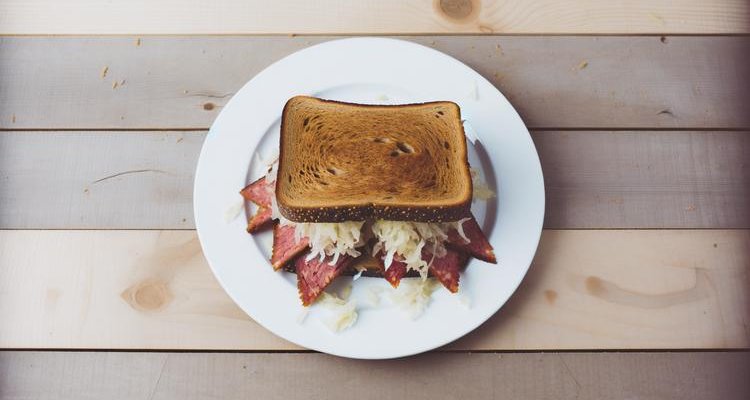
The classic pastrami presentation is, of course, piled high on rye bread with spicy brown mustard, Swiss cheese, and tangy sauerkraut for a legendary Reuben sandwich. But don’t limit yourself—homemade pastrami elevates everything from breakfast hash to grain bowls to charcuterie boards. Serve it warm for maximum flavor and tenderness, though cold pastrami slices make excellent sandwich meat for everyday lunches.
Storage and Reheating Tips
Store leftover pastrami wrapped tightly in plastic wrap or vacuum-sealed bags in the refrigerator for up to 7 days. The curing process extends shelf life considerably compared to regular smoked brisket. For longer storage, slice the pastrami to your preferred thickness, separate slices with parchment paper, and freeze in airtight bags for up to 3 months. Thaw overnight in the refrigerator and gently reheat in a steamer, low oven, or microwave before serving.
Common Questions About Making Pastrami
Is Prague Powder #1 safe to use, and can I skip it?
Prague Powder #1 is completely safe when used in the correct proportions—typically 1 teaspoon per 5 pounds of meat. It’s been used in commercial meat curing for over a century and is approved by food safety agencies worldwide. However, you cannot skip it and still make authentic pastrami. Without curing salt, the meat won’t develop the characteristic pink color, cured flavor, or food safety protection during the extended brining period. If you’re uncomfortable using curing salt, consider making a spice-rubbed smoked brisket instead—delicious, but technically not pastrami.
How long does the entire pastrami-making process take?
Plan for 10-12 days total from start to finish. The brine cure requires 7-10 days in the refrigerator, followed by 12-24 hours of uncovered drying to form the pellicle. The smoking process takes 7-9 hours (4-5 hours unwrapped, 3-4 hours wrapped), plus 1 hour of resting. While the timeline is long, active hands-on work is minimal—most of the time is passive curing and smoking.
Can I use a different cut of beef instead of brisket flat?
Brisket flat is traditional and produces the best results due to its size, fat content, and muscle structure, which mirrors what classic delis use. However, you can successfully make pastrami from beef round, chuck roast, or even short ribs if brisket is unavailable or too expensive. Adjust curing time based on thickness—thinner cuts need less time in the brine (4-5 days for a 2-inch thick roast), while maintaining the same per-pound ratios of curing ingredients.
What if my pastrami turns out too salty?
If your finished pastrami tastes overly salty, the most common cause is insufficient rinsing after the curing period or curing for too long. Always rinse the brisket thoroughly under cold running water for several minutes, rubbing the surface to remove all surface cure. If you discover the saltiness after cooking, you can salvage it by slicing the pastrami thinly and soaking slices in cold water for 30-60 minutes, which draws out excess salt. For future batches, reduce the curing time by 1-2 days or use slightly less kosher salt in the brine.
Do I need a special smoker, or will any grill work?
Any smoker or grill capable of maintaining steady temperatures in the 225-250°F range for extended periods will work beautifully for pastrami. This includes pellet smokers, offset smokers, kamado grills, Weber kettles with snake methods, or even electric smokers. The key is temperature stability and the ability to add wood for smoke flavor. If you’re using a standard charcoal or gas grill, set it up for indirect heat and use a water pan to stabilize temperatures. A reliable thermometer is more important than an expensive smoker for this recipe.
Perfect Smoker Pastrami Recipe (From Brisket)
Equipment
- Smoker or grill with indirect heat capability
- Digital probe thermometer
- Large food-safe container or 2-gallon zip-top bag
- Wire rack and sheet pan
- Butcher paper or heavy-duty aluminum foil
- Sharp slicing knife or electric meat slicer
Ingredients
- 4 lb beef brisket flat
- 1 gallon water cold
- 1 cup kosher salt
- 0.75 cup dark brown sugar
- 3 tablespoons Prague Powder #1 pink curing salt
- 0.25 cup pickling spice blend
- 8 cloves garlic smashed
- 4 tablespoons black peppercorns coarsely cracked
- 4 tablespoons coriander seeds coarsely cracked
- 2 tablespoons yellow mustard optional binder
Instructions
- Prepare the curing brine by combining 1 gallon cold water, 1 cup kosher salt, 0.75 cup dark brown sugar, 3 tablespoons Prague Powder #1, 0.25 cup pickling spices, and 8 smashed garlic cloves in a large pot. Heat over medium heat, stirring occasionally, until salt and sugar fully dissolve (about 5 minutes). Remove from heat and cool to room temperature, then refrigerate until completely cold (below 40°F).
- Place the 4 lb beef brisket flat in a large food-safe container or heavy-duty zip-top bag. Pour the chilled brine over the brisket, ensuring the meat is fully submerged. If needed, weigh down the brisket with a plate. Seal the container or bag and refrigerate for 7 days, flipping the brisket once daily to ensure even curing.
- After 7 days, remove the brisket from the brine and rinse thoroughly under cold running water for 3 minutes, rubbing the surface to remove all surface cure. Pat completely dry with paper towels.
- Place the rinsed brisket uncovered on a wire rack set over a sheet pan. Refrigerate uncovered for 24 hours to form a pellicle (slightly tacky surface that helps smoke and seasoning adhere).
- Combine 4 tablespoons coarsely cracked black peppercorns and 4 tablespoons coarsely cracked coriander seeds in a small bowl. If using, apply a thin layer of yellow mustard to all surfaces of the brisket. Press the peppercorn-coriander mixture firmly into all surfaces of the meat, creating an even crust.
- Preheat your smoker to 225°F using oak, hickory, or fruit wood. Insert a probe thermometer into the thickest part of the brisket flat.
- Place the seasoned brisket directly on the smoker grate fat-side up. Smoke uncovered for 4 hours or until internal temperature reaches 165°F, maintaining steady smoker temperature at 225°F.
- When brisket reaches 165°F internal temperature, remove from smoker and wrap tightly in butcher paper or heavy-duty aluminum foil. Return wrapped brisket to smoker.
- Continue cooking wrapped brisket for 4 hours or until internal temperature reaches 203°F. The pastrami should feel probe-tender when tested with a thermometer or skewer.
- Remove finished pastrami from smoker and rest wrapped for 60 minutes in a cooler or 170°F oven to allow juices to redistribute.
- Unwrap the rested pastrami and slice against the grain to 0.125-inch thickness using a sharp knife or electric slicer. Serve immediately on rye bread with mustard and sauerkraut, or refrigerate for up to 7 days.
Notes
Contents

